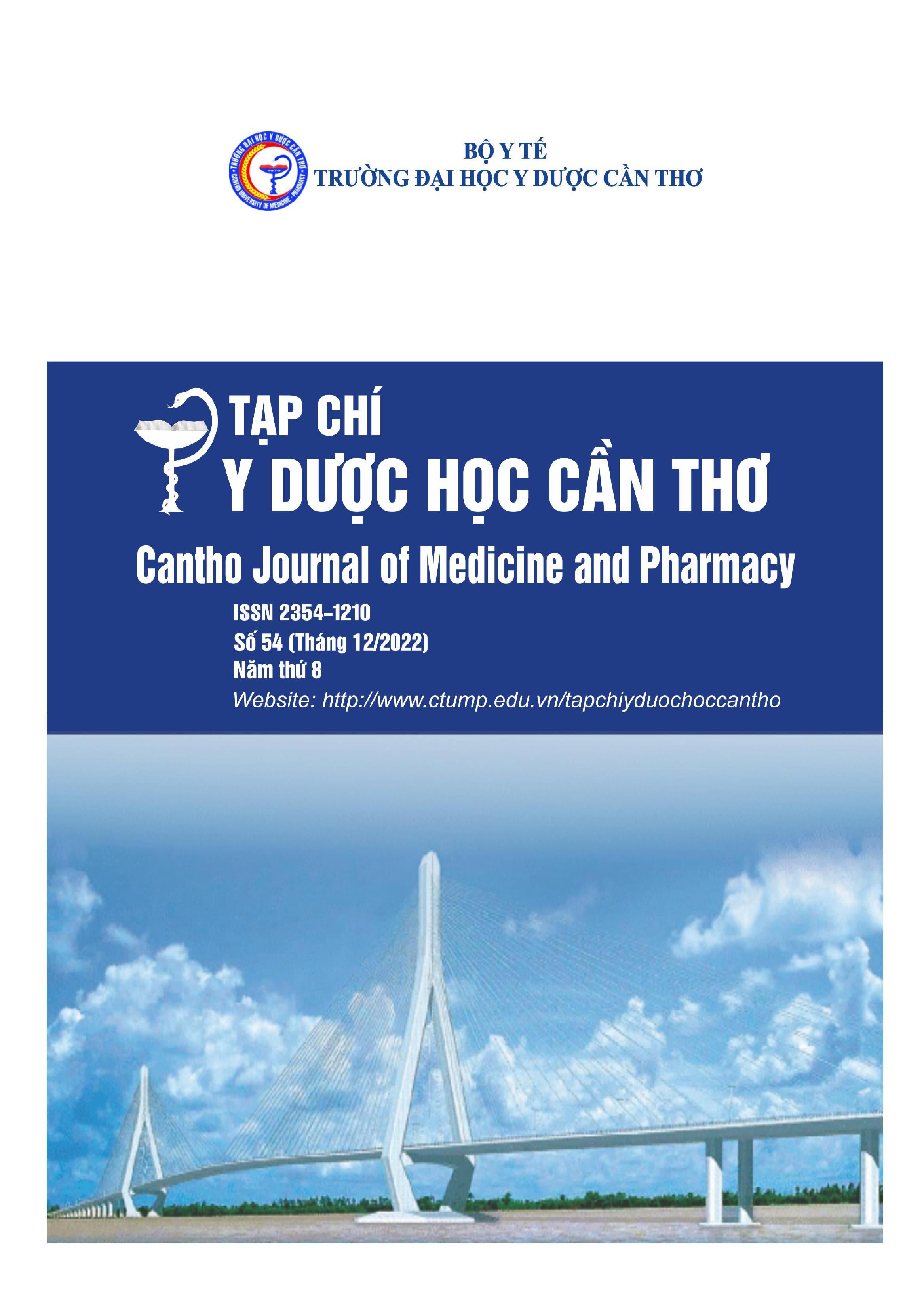RESULTS IN THE TREATMENT OF PARKINSON’S DISEASE WITH LEVODOPA COMBINED PRAMIPEXOLE AT CAN THO CENTRAL GENERAL HOSPITAL
Main Article Content
Abstract
Background: Parkinson's disease is known for its group of motor symptoms and non- motor symptoms that cause disability and negatively affect the patient's quality of life. Early diagnosis and appropriate treatment to minimize the negative effects of the disease and drug side effects on the patient. Objective: To describe the clinical symptoms and evaluation of the results of levodopa combined with pramipexole in the treatment of Parkinson's disease. Material and method: 61 individuals with Parkinson’s disease admitted to Can Tho Central General Hospital from March 2021 to May 2022 investigate motor symptoms, non-motor symptoms, UPDRS scores, and PDQ-39 scores at untreated and after levodopa combined pramipexole therapy. Results: The mean age of disease was 65±5.15. Common motor symptoms were dyskinesia (96.72%), muscle stiffness, cogwheel (96.72%), and tremor (95.08%). Common non-motor symptoms were pain, sensory disturbance (93.44%), and autonomic dysfunction (93.44%). Combination therapy of levodopa and pramipexole resulted in statistically significant improvements in the UPDRS part I, II, and III scores and PDQ-39 scores (p<0.05). Conclusion: Treatment with levodopa combined with pramipexole improves clinical symptoms and quality of life in Parkinson's patients, through an improvement in the UPDRS score and PDQ-39 score.
Article Details
Keywords
Parkinson's disease, levodopa, pramipexole, UPDRS score, PDQ-39 score
References
2. Đào Thùy Dương và Nguyễn Thanh Bình (2021), “Đặc điểm lâm sàng và chất lượng cuộc sống của bệnh nhân Parkinson thể cứng”, Tạp chí Y học Việt Nam, 505(2), tr.153-156.
3. Nguyễn Thúy Linh, Nguyễn Văn Liệu (2020), “Đánh giá chất lượng cuộc sống bệnh nhân Parkinson bằng thang điểm PDQ-39, SF36 và một số yếu tố liên quan”, Tạp chí Y học Việt Nam, 494(1), tr.153-156.
4. Lê Minh, Trần Ngọc Tài (2009), “Đặc điểm lâm sàng về chức năng vận động của bệnh Parkinson và phân độ chẩn đoán theo Hoehn và Yahr”, Tạp chí Y học thành phố Hồ Chí Minh, 13(1), tr.363-369.
5. Dorsey ER, Constantinescu R, et al. (2005), “Projected number of people with Parkinson disease in the most populous nations, 2005 through 2030”, Neurology 2007 Jan, 68(5), pp.384-6.
6. Hughes AJ, Daniel SE, et al. (1992), “Accuracy of clinical diagnosis of idiopathic Parkinson’s disease. A clinico-pathological study of 100 cases”, JNNP 1992, 55, pp.181-184.
7. Huang J, Hong W, et al. (2020), “Efficacy of pramipexole combined with levodopa for Parkinson's disease treatment and their effects on QOL and serum TNF-α levels”, Journal of International Medical Research, 48(7), pp.1-11.
8. Jiang DQ, Zang QM, et al. (2021), “Comparison of pramipexole and levodopa/benserazide combination therapy versus levodopa/benserazide monotherapy in the treatment of Parkinson's disease: a systematic review and meta-analysis”, Naunyn Schmiedeberg’s Arch Pharmacol, 394(9), pp.1893-1905.
9. Kalia LV, Lang AE (2015), “Parkinson's disease”, Lancet. 2015 Aug 29, 386(9996), pp.896-912.
10. Yu, Yongting, et al. (2017), “Observation on the curative effect of madopar combined with pramipexole in the treatment of Parkinson’s diseases”, Advanced Emergency Medicine, 6(1), pp.4-8.
11. Zoghbi H.Y (2013), “Genetic mechanisms in degenerative diseases of neurvous system”, Principles of neural science, 5thedition, pp.999-1014.


